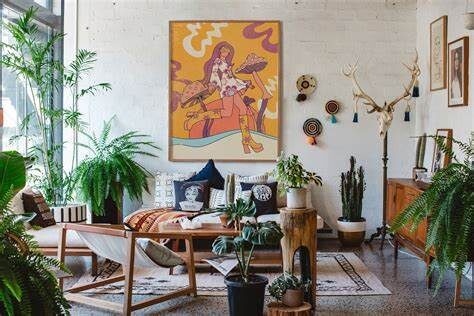
Lava lamps oozing like technicolor volcanoes, walls bursting with kaleidoscopic patterns, and furniture dancing between space-age curves and groovy shag. No, this isn’t a flashback to a disco fever dream; it’s the vibrant, audacious world of psychedelic 70s interior design, a style where bold colors, playful textures, and a touch of the unconventional collide to create a haven of self-expression and counterculture cool.
Forget the beige monotony of the 50s and the slick minimalism of the 80s; the 70s were all about breaking free, embracing individuality, and letting your freak flag fly, even in your living room. Think of it as an interior acid trip, but without the questionable substances (just maybe some lava lamp-induced hallucinations, no judgment here). So, grab your bell-bottoms, crank up the funk, and let’s dive into the groovy depths of this truly far-out design era.
Introduction
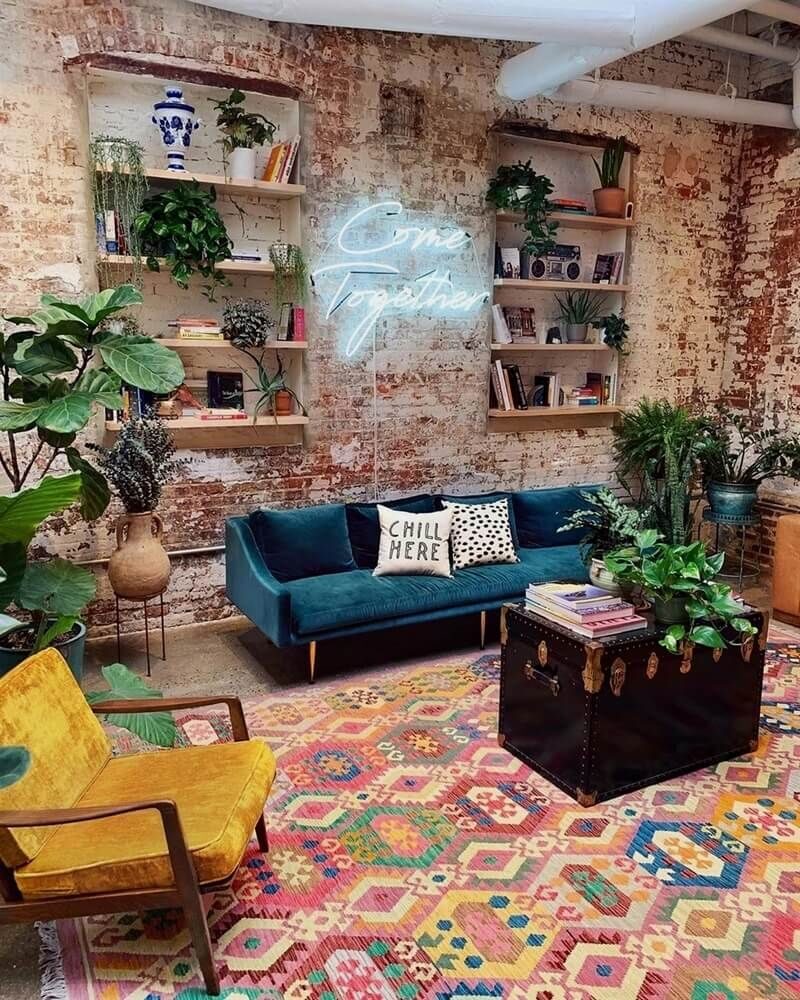
The 1970s was a decade marked by social and cultural change, and nowhere is this more evident than in the world of interior design. The psychedelic movement of the 60s extended its colorful influence into the 70s, giving rise to a unique and vibrant aesthetic that transformed homes into kaleidoscopic havens. Let’s take a trip down memory lane and explore the mesmerizing world of psychedelic 70s interior design.
Beyond Flower Power: A Triptych of Influences
The 70s weren’t a one-hit wonder; they were a glorious mashup of counterculture movements, each lending its distinct flavor to the design palette. Imagine the free-spirited hippie vibes radiating through swirling paisley prints and earthy macrame, the space-age futurism echoing in chrome accents and geometric patterns, and the pop art punch blasting through bold colors and graphic prints. It’s a technicolor buffet, and you’re invited to pile your plate high with whatever tickles your psychedelic fancy.
Color Explosion: Where Walls Dance to a Funky Beat
Forget white walls and beige accents; the 70s were all about embracing the rainbow – and then some. Imagine burnt orange walls setting the stage for a dramatic entrance, mustard yellow screaming sunshine from the kitchen, and avocado green making a statement in the bathroom. Don’t be afraid to clash; think complementary chaos, like turquoise and orange grooving together on a shag carpet. Remember, color is your paintbrush; let your walls be your canvas and create a masterpiece that makes your eyes sing.
Texture Tango: Where Furry Meets Metallic, Velvet Meets Macrame
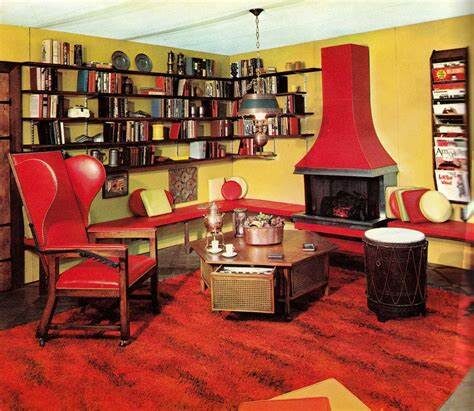
In the 70s, touch was just as important as sight. Imagine fur throws caressing your skin as you sink into a plush velvet sofa, woven macrame wall hangings casting intricate shadows, and metallic accents adding a touch of disco-ball sparkle. Think of it as a sensory buffet; every surface begs to be stroked; every texture whispers a different story. Don’t shy away from mixing and matching; let fur cozy up to chrome, wool mingle with velvet, and rattan share the stage with macrame. This is a space where touch tells a story, and every texture is a character in your groovy living room drama.
Lighting the Way: Beyond Chandeliers, Enter Lava Lamps
Forget sterile overhead lights; the 70s were all about mood lighting with a hint of the otherworldly. Imagine lava lamps oozing like molten sunsets, casting kaleidoscopic shadows on your far-out furniture. Picture string lights weaving constellations across the ceiling, and oversized pendant lamps dripping like technicolor teardrops. Every room needs a spotlight, and in the 70s, that spotlight comes in all shapes, sizes, and shades of groovy glow.
Beyond Function, Beyond Form: Furniture with a Funk
In the 70s, furniture wasn’t just about practicality; it was a statement piece, a living sculpture screaming individuality. Imagine sleek Lucite coffee tables reflecting the technicolor chaos, chrome and glass chairs gleaming like spaceships landed in your living room, and beanbag chairs inviting you to sink into a sea of plush comfort. Every piece had a personality, a story to tell, and a whole lot of funks to share. Don’t be afraid to mix and match styles; let grandma’s heirloom rocking chair groove with a modular space-age couch. This is your furniture circus, and you’re the ringmaster!
More Than Aesthetics: Bringing it All Together
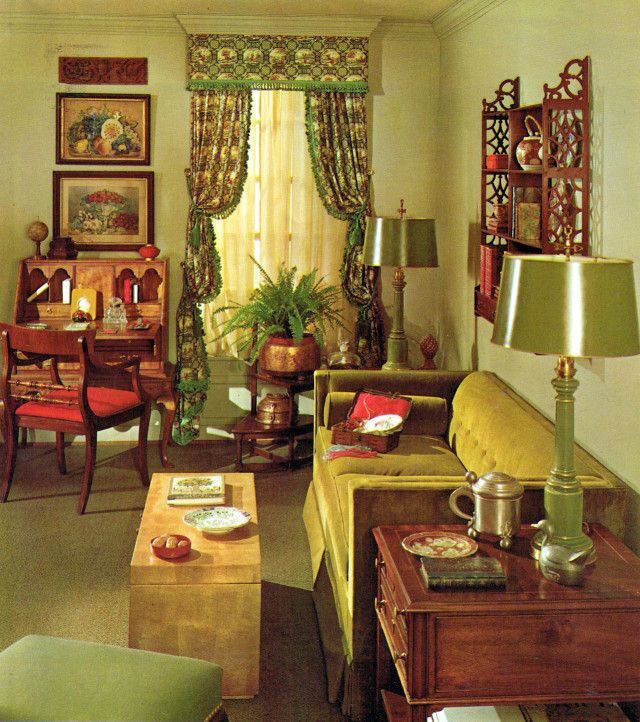
Psychedelic 70s design isn’t just about bold colors and groovy furniture; it’s about creating a space that reflects your unique vibe. Imagine vintage posters screaming rebellion from your walls, handcrafted ceramics housing your favorite cacti, and family heirlooms sharing space with funky flea market finds. Don’t be afraid to inject your personality; let your hobbies, passions, and travel souvenirs tell your story. This is your haven, your groovy sanctuary, and every object should sing your individual anthem.
Tips for Bringing the 70s Home
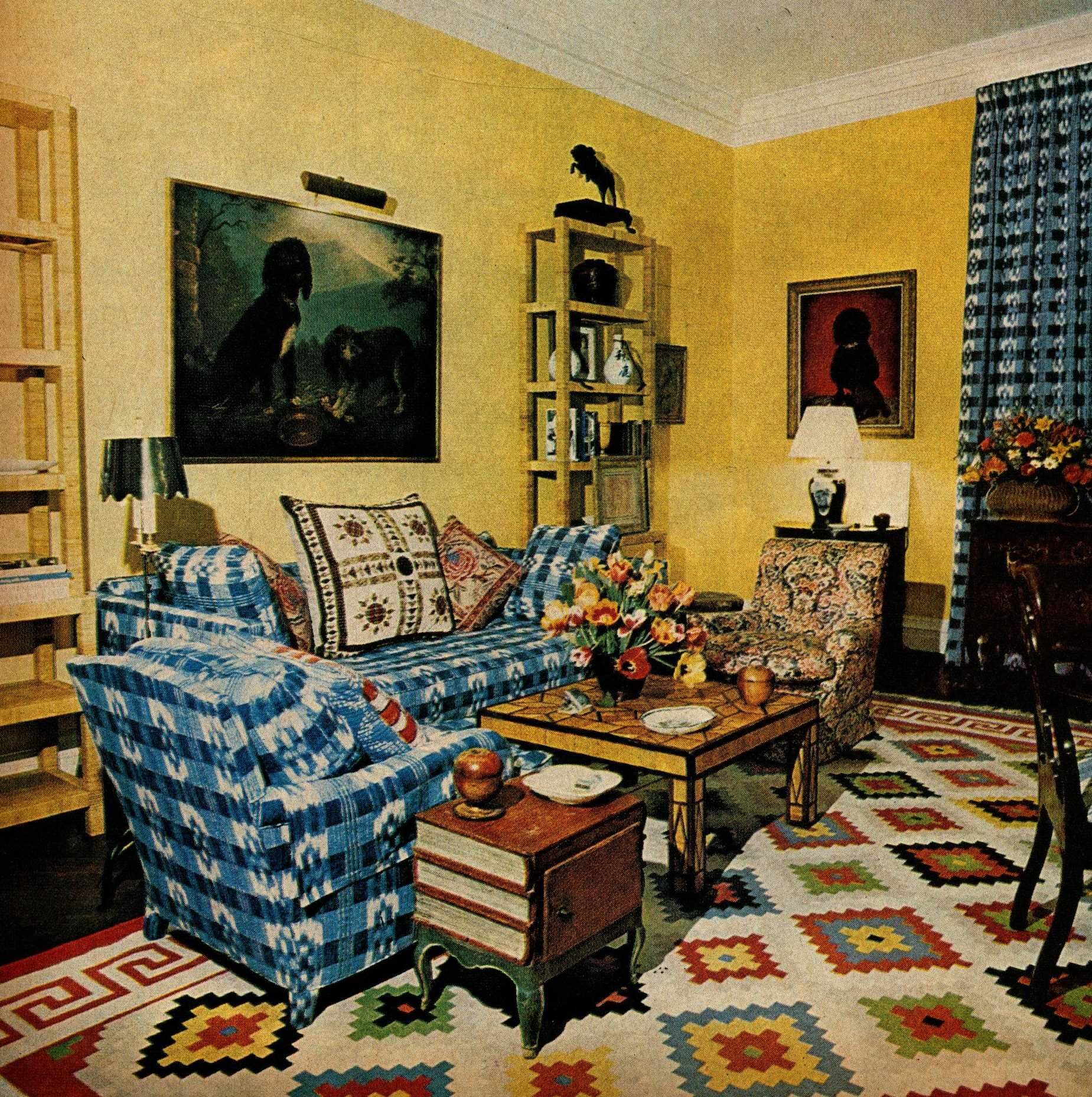
Ready to unleash your inner interior decorator and channel the groovy spirit of the 70s? Here are some tips:
- Hunt for treasures: Flea markets, vintage stores, and even grandma’s attic are your treasure troves.
- DIY your way to groovy heaven: Macrame wall hangings, tie-dye throws, and painted furniture.
- Let the light shine: Lava lamps, string lights, and funky pendants
- Mix and match with confidence: Don’t be afraid to blend styles; vintage finds can groove with contemporary pieces, and bold patterns can dance with muted tones. It’s your space, your rules!
- Embrace the color wheel: Don’t shy away from bold pairings, experiment with complementary contrasts, and let your color palette be your groovy soundtrack.
Remember, the 70s were all about breaking free and expressing yourself. Don’t be afraid to experiment, play with patterns, and embrace the unexpected. The more your personality shines through, the groovier your psychedelic haven will be.
Conclusion
psychedelic 70s interior design was a celebration of individuality, creativity, and a break from the norm. It was an era where homes became canvases for self-expression, and each room told a vibrant and eclectic story. While the 70s may be in the rearview mirror, its influence continues to be felt in contemporary design, as designers and homeowners alike revisit this era for inspiration, injecting a dose of retro charm into modern spaces. So, if you’re feeling adventurous, why not channel your inner flower child and bring a bit of psychedelic 70s flair into your own living space? After all, the groovy vibes are timeless.
You May Also Like…
- Nutrient-Rich Foods for Reducing the Risk of Chronic Diseases
- Nutrition-Focused Meal Plans for Weight Loss and Maintenance
- Are Pet Tarantulas Poisonous
- A Guide to Making Money Organically On YouTube
FAQs
1. Is 70s interior design too outlandish for a modern home?
Absolutely not! You can incorporate subtle elements like pops of color, vintage furniture pieces, or textured accents to add a touch of groovy flair without going full-on lava lamp explosion.
2. Where can I find inspiration for 70s interior design?
- Movies and TV shows: Dive into the visuals of “Boogie Nights”, “Dazed and Confused”, or “That 70s Show” for some authentic inspiration.
- Design magazines and online resources: Browse publications like Dwell or Apartment Therapy for modern interpretations of 70s style.
- Vintage stores and flea markets: Immerse yourself in the actual pieces and soak up the authentic vibes.
- Social media: Follow design accounts dedicated to 70s aesthetics for ongoing inspiration and creative ideas.
3. Won’t I get tired of such a bold and colorful style?
The beauty of 70s design is its adaptability. Start with small pops of color and funky accents, and you can easily adjust the intensity as your tastes evolve. Remember, it’s your space, your groovy journey!
4. Is 70s design expensive to achieve?
Not necessarily! Upcycle vintage furniture, DIY some macrame wall hangings, and hunt for bargains at flea markets. You can create a groovy haven without breaking the bank.
5. How do I make sure my 70s-inspired space doesn’t feel too kitschy?
Focus on quality over quantity. Invest in key pieces that exude genuine 70s charm and avoid overcrowding your space with too many clashing patterns or accessories. Remember, balance is key to achieving a stylish and timeless vibe.


